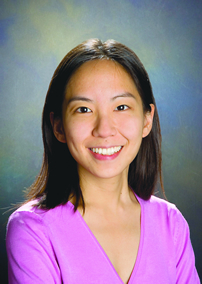Osteoarthritis is the most common form of arthritis, but clinicians have few effective treatment options, so it’s no surprise that growing numbers of patients are using, and asking about, nutritional supplements such as glucosamine and chondroitin.

“These two have been controversial for well over a decade, with strong opinions on both sides,” said Timothy McAlindon, MD, MPH, Professor and Chief of Rheumatology at Tufts University School of Medicine. “At the same time, it is apparent from recent guidelines from various organizations that the field of available therapies for OA has, if anything, diminished. It is important to look at all possible therapies, especially the ones that are safe.”
Dr. McAlindon will kick off Hot Topics in Osteoarthritis: Nutraceuticals, Narcotic Analgesics and Behavioral Interventions on Sunday from 8:30 – 10:00 am. There are few definitive answers in any of these areas, but the beginnings of consensus have emerged.
There is broad agreement that glucosamine hydrochloride has little to no credible evidence for efficacy, Dr. McAlindon said. The question remains open for glucosamine sulfate.
There have been recent positive studies, but they were performed with the active involvement of the manufacturer.
“These studies were performed to a high level of methodologic quality, but some in the field have shown heterogeneity and evidence of patient bias,” he said. “Some have inferred that the evidence for efficacy is not strong. But safety does not appear to be an issue.”
There are similar questions about the efficacy of chondroitin, although recent studies have shown positive results. Dr. McAlindon will assess the current evidence on both glucosamine and chondroitin based on a pooled analysis of the available data.
“There should be considerable interest in these pooled analyses by the medical community,” he said. “There certainly is considerable interest from patients. There is a huge market for both glucosamine and chondroitin. Patients ask us about these nutraceuticals, so we need to be informed.”
In addition to glucosamine and chondroitin, patients are asking about the potential therapeutic effects of cumin, turmeric, and other substances being touted in consumer media.
“There have been positive studies for some of these substances,” he said. “We need to remain open to the possibility that some of these products may play a role in the management of OA if for no other reason than their relative safety.”
Relative safety is emerging as a key issue in pain management for OA. NSAIDs are commonly used to manage pain, but GI complications are a common concern in chronic use, especially for the older patients, who typically have painful OA.

“In addition to the cyclooxygenase pathways blocked by NSAIDs, chronic pain may result from dysregulation of opioidergic and/or serotonergic central nervous system pathways,” said Yvonne C. Lee, MD, MMSc, Assistant Professor of Medicine at Harvard Medical School. “In these situations, clinicians may want to think about medications that target those specific central pain processing pathways.”
Opioids are the traditional choice, but the use of narcotic analgesics is becoming more controversial. Newer agents, including serotonin norepinephrine reuptake inhibitors (SNRIs) and dual-acting analgesics such as tramadol and tapentadol, have emerged as possible alternatives.
“Many clinicians may prescribe an opioid and keep that person on that opioid for the long term,” Dr. Lee said. “We need to rethink that tendency and use opioids for the short term as much as possible. We need to re-evaluate every patient at every visit, ask if that patient really needs an opioid, whether we might be able to taper him or her off, whether there might be other medications that could be more helpful, and whether there might be nonpharmacologic alternatives that could also be helpful.”
Behavioral interventions have become more popular, but not all rheumatologists are convinced of their effectiveness. Susan Bartlett, PhD, Associate Professor of Medicine at McGill University, will discuss the role of biofeedback and coping skills.
“Pain is the most common presenting symptom and one of the highest priorities for patients with OA,” Dr. Lee said. “It is important that clinicians understand the mechanisms behind pain and the different ways to treat pain as well as the potential for adverse events. With the aging population, more and more people are going to be coming to us with OA and pain.”


